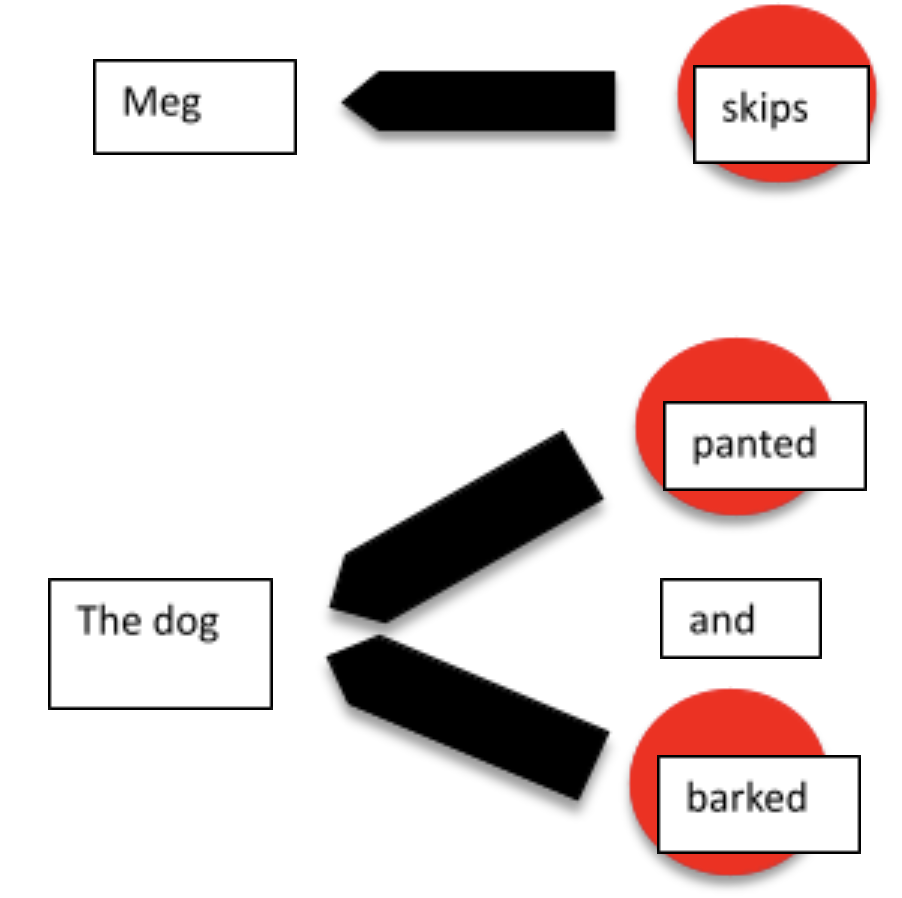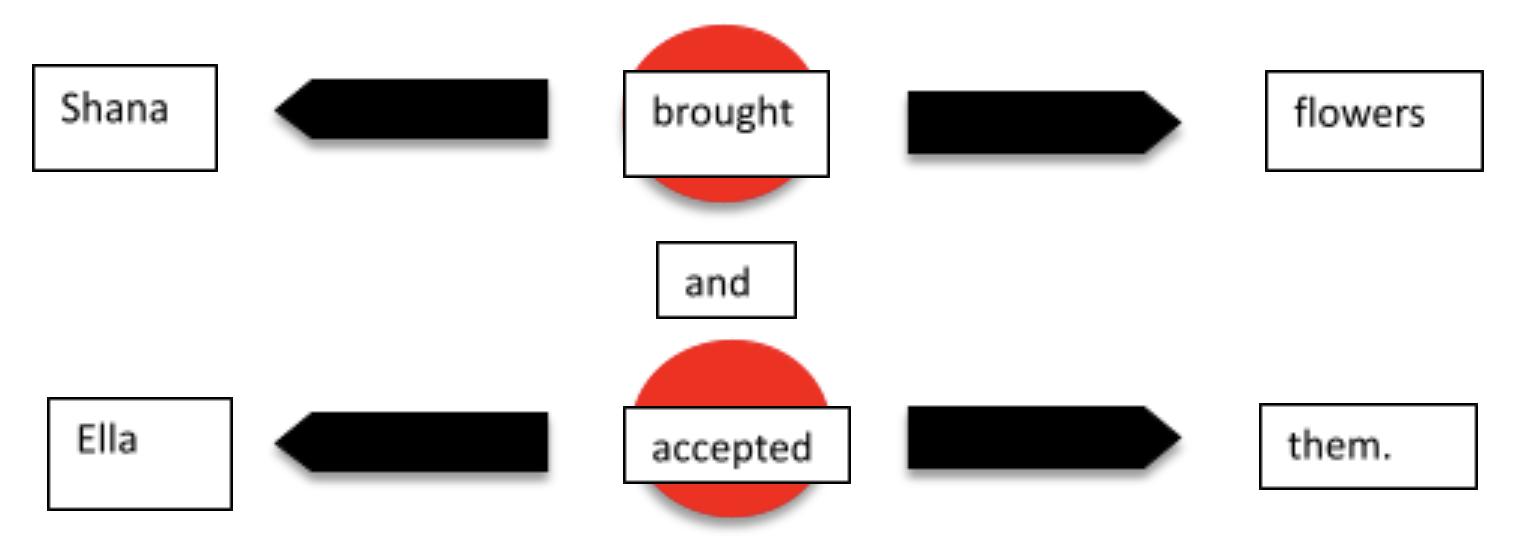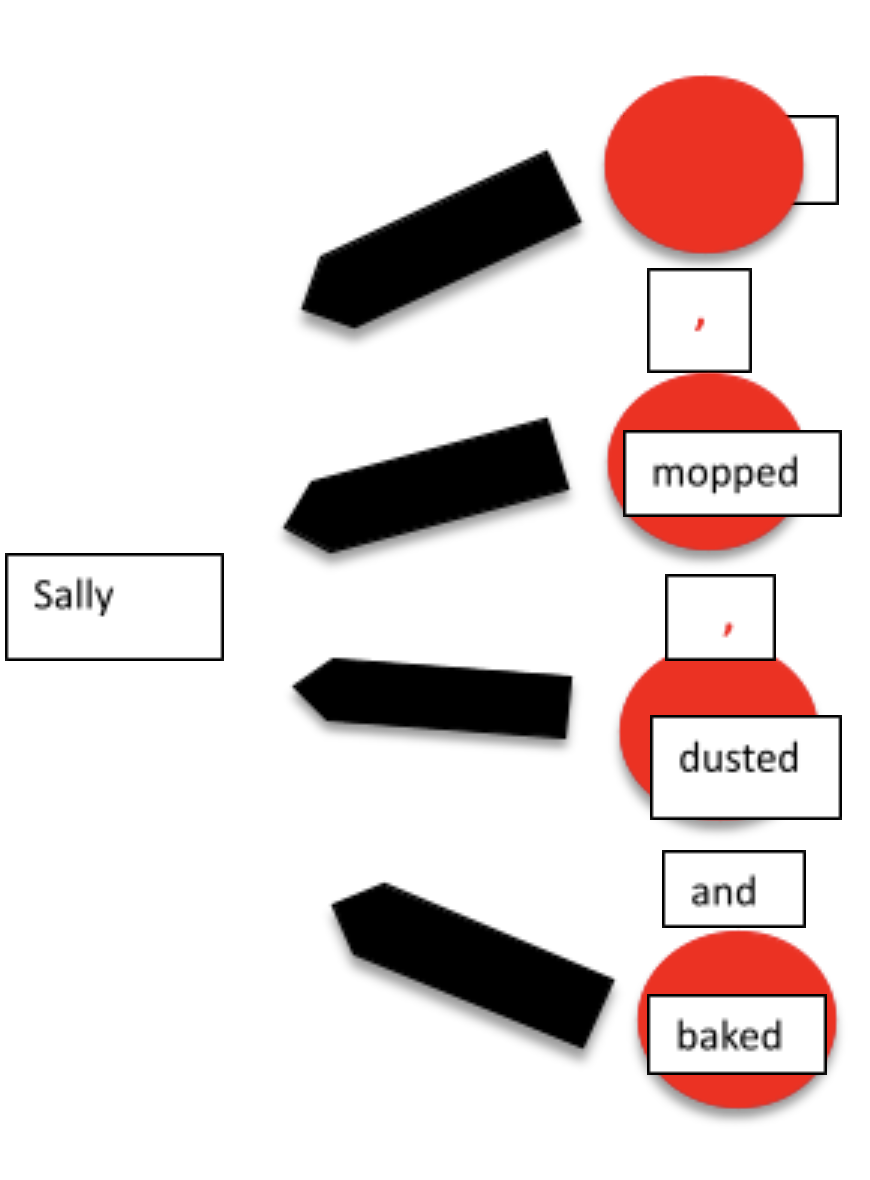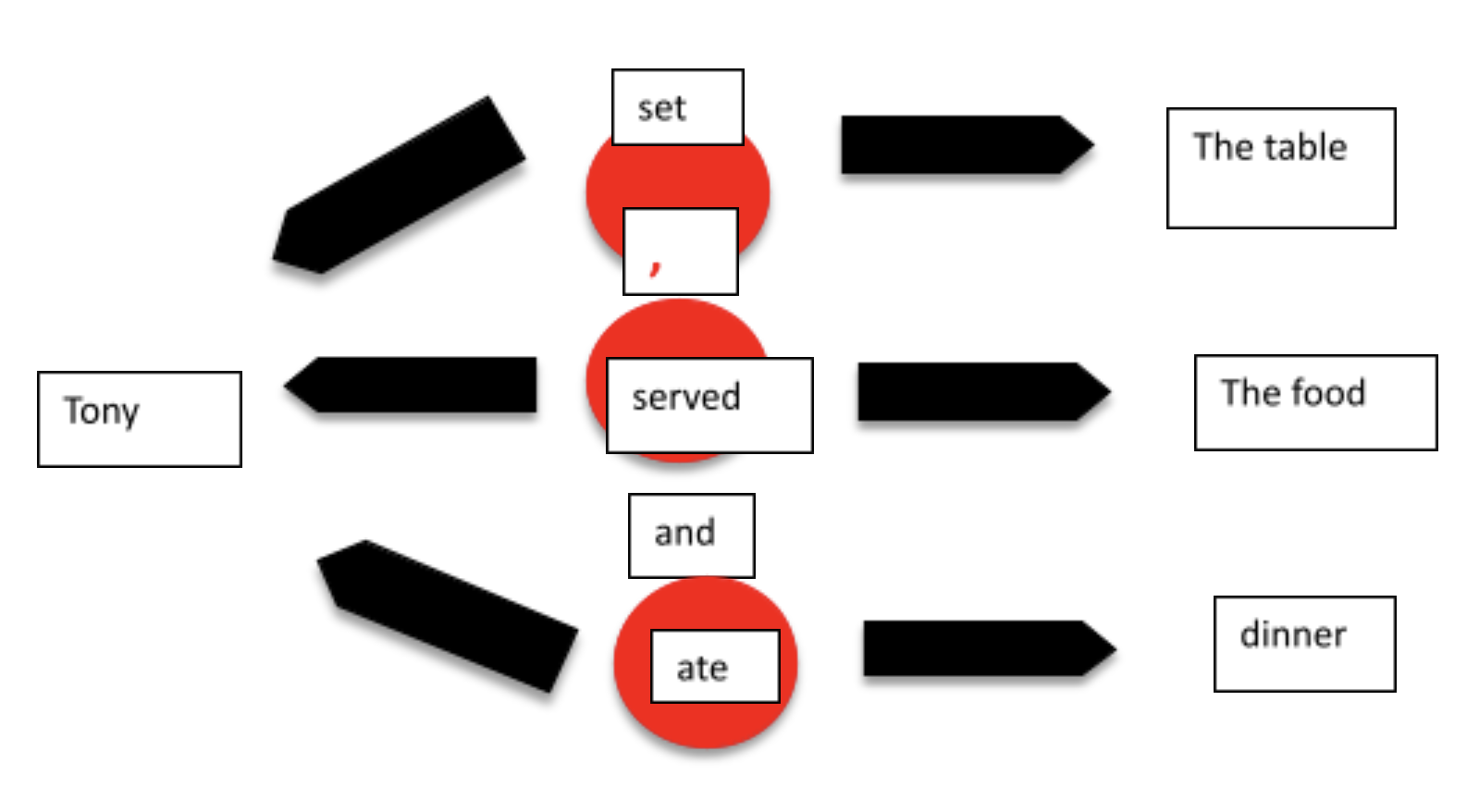Reading Analysis Stage 1: Simple Sentences
Materials:
Prepared printed slips OR handwritten slips with sentences which can be chosen from the best authors of the country and which give the possibility of interpretation on the child's part.
A box
6 red circles
6 black arrows which are blank. These correspond in size to the First Analysis Chart
Scissors
Basket for cut-up slips
Purposes:
Total reading, which includes comprehension of the meaning as well as the emotion and awareness of style
Awareness of syntax (word order)
Practice in Reading
Age: 5 ½ and up
Preparation: The child has worked through the Function of Word and Continuation of Command exercises.
Presentation: Do Presentation 1 & 2 the same day
Presentation 1: Finding the Subject and Action
Invite the child for the lesson and to bring the box and the basket.
Lay out the items vertically in two rows the top of the table
Offer a slip for the child to read and do.
Ask the child, “What is the action word?” and cut it from the slip.
Explain the red circle is for the action word and place it on the red circle.
Ask, “Who is it that___?” and set the arrow on the left of the circle pointing to the left.
Read the slips again and move them to the basket.
Offers a slip with two actions and two subjects for the child to read and do (you play a role as well) Prompt for the verbs, cut and place on the circles. Prompt for the subjects, place arrows and slips at the end.
At some point, show the child the period and that the period means the end of the sentence-where we pause.
Transpose slips that are a pair, read and ask, “Is that what we/you did?”, return to order, and move them to the basket.
Offer one subject and two actions and repeat the presentation pattern.
Offer for two subjects and two actions and repeat the presentation pattern.
Move to presentation 2.
Original Sentence: The dog panted and barked.
Original Sentence: Ryan and Jay cheered.
Original Sentence: Pete threw and Sam caught.
Presentation 2: Finding the Object
Give the first slip (one subject, one action, one object, to the child to read and to do.
Ask which words are the action words and have child cut them out and place them
Ask “Who is it that____?” while moving the arrow-the subject/s go to the left of the arrow pointing left.
Ask “S/he/they picked what?”, moving the arrow to the right of the circle pointing right-Place the object at the end.
Transpose nouns or verbs, read and ask, “is that what you/we did?” Replace the transposed slips and read then place the slips in the basket.
Repeat in this way for the other slips, identify the verb, then the subject for each verb, then the predicate for each verb.
Move to Presentation 3 and 4 the next day.
Original Sentence: Amy picked flowers.
Original Sentence: Mary identified Utah and Idaho.
Original Sentence: Bob weeded the garden and Stan raked the leaves.
Presentation 3: Introducing the Pronoun
Invite the child to take the envelope 2, guide brings the box and the basket.
Offer a slip to the child (two subjects, two actions, object and its pronoun) to read and do
Ask the child to identify, cut out the action words, and place on the symbols.
Ask the “who” questions and place the name(s) at left pointing arrows
Ask the “what” questions and place them at the right-pointing arrow. Explain that the pronoun (say ‘them’ or whatever the slip says) refers to or means the object.
Transpose objects (object and pronoun) ask the child if it makes sense. Fix the slips, read, and place them in the basket.
Repeat for one subject, two actions, an object with its pronoun.
Move to presentation 4
Original Sentence: Shana bought flowers and Ella accepted them.
Original Sentence: John bought berries and ate them.
Presentation 4: Introducing the Comma
Give the first slip to the child to read and to do (one subject with several actions)
Ask the child to identify, cut out and place the action words
Who did it? For each verb ask the “Who” question placing a left facing arrow to the name
Place the ‘and’s between the circles
Have the child read the phrase
“It sounds like we are saying ‘and’ too many times, so we are going to use this comma-we pause at a comma”, draw a comma on the back of the first ‘and’ in red.
If needed, have the child read and add other commas on the back of the ‘and’s for all but one.
Transpose the ‘and’ and the commas have the child read after each. Fix the commas, read, and place the slips in the basket
Repeat for another
Original Sentence: Sally polished and mopped and dusted and baked
Original Sentence: Tony set the table and served the food and ate dinner.
Control of Error: None
Following Exercises: None
Pedagogical Notes:
There is no formal lesson on capital letters and punctuation. As soon as we start writing sentences, we use them spontaneously.
The questions we ask help to identify the subject and the predicate (action). The vocabulary of subject and predicate are not for use with the children.
We will do all four of these lessons close to each other.
Incorporate the names of the children in class.
This first set of arrows and circles can be made of stiff felt, card stock, or poster board, etc.
The arrows always point away from the verb. This offers an impression that the predicate, or action words, are the center and most important element of the sentence










